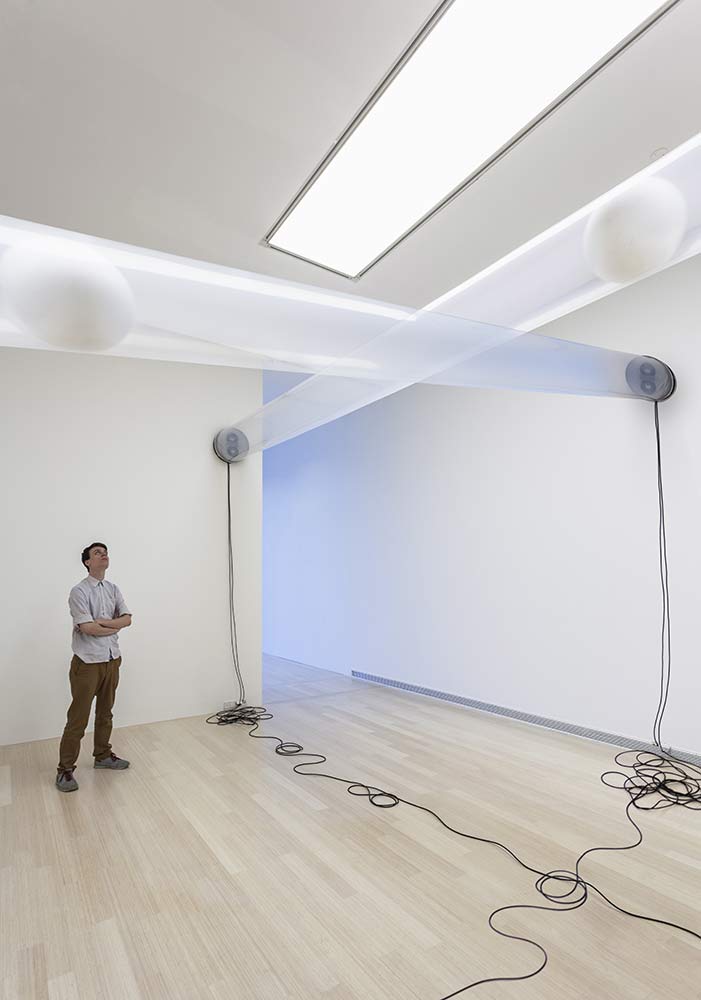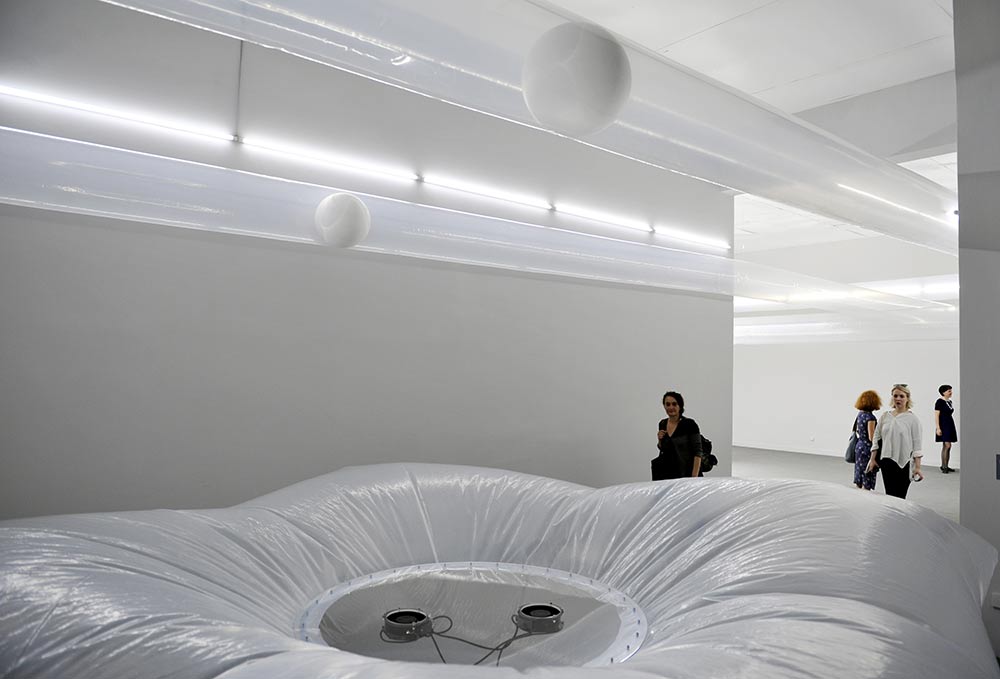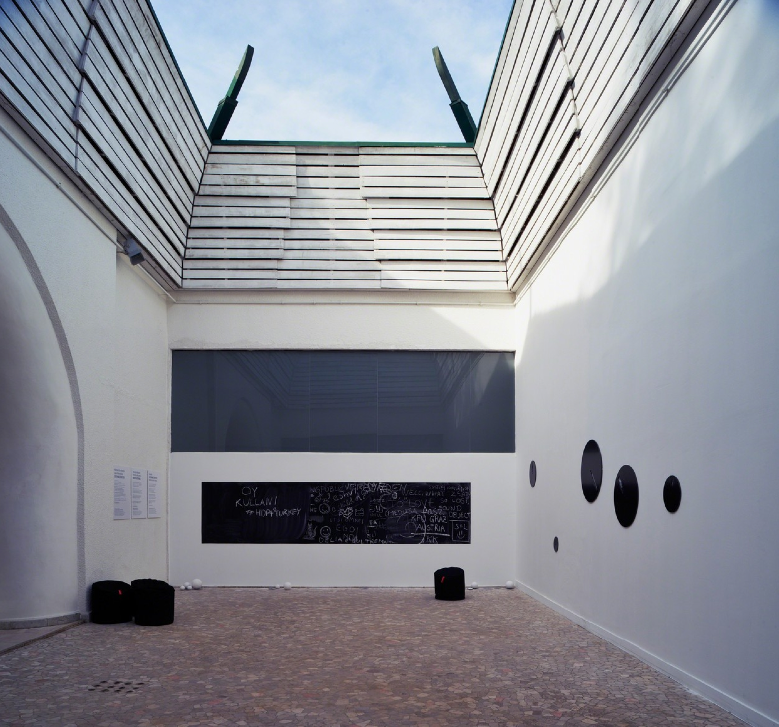Sustainable Identities – Hungarian Pavilion: Self Defining Processes of identity formation at La Biennale di Venezia
Author ········· Samia Lilla Al-Asir
Published ······ Online, Oct 2015
Section ······· Art & Design
Published ······ Online, Oct 2015
Section ······· Art & Design

The Venice Art Biennale, the contemporary art exhibition coveted by artists worldwide, organised in Italy once every two years, became international in the first decades of the 20th Century. In 2015, the 56th edition of the exhibition series, the Biennale’s chief curator Okwui Enwezor invited the participating artists to explore the theme of possible future world visions. The Hungarian pavilion, the work of a joint effort between curator Kinga German and artist Szilárd Cseke, which culminated in a space-specific kinetic installation as part of a thematic system, deals with questions revolving around identity-formation and sustainability. Having personally participated in the realisation of this project, and relating to this concept by coming from a mixed cultural background and upbringing, it was a very fulfilling experience to be a part of the Biennale. The neighbouring pavilions, the works of the Japanese Chiharu Shiota, the Swiss Pamela Rosenkranz, and the Austrian Heimo Zobering, all shared our vision of creating a space-dependent experience.

The installation Sustainable Identities builds upon a visual toolkit – a result of decades of experimentation by Cseke who has been addressing the subjects of identity and sustainability for many years, developing techniques that have matured into his installation for the Biennale. Kinga German’s concept takes the attributions of the pavilion space into consideration intensively. It makes use of the fragmentations of the Hungarian Pavilion’s interior, while originating from Szilárd Cseke’s work to date, it expands and fills up the given space. The installation makes use of the architectural symmetry, guiding the flow of visitors throughout the various halls. The resulting abstract system, paired with the exhibition’s title, turns into a symbolic space, in which, the physicality of the creations offers concrete focus points for the visitors.

With the help of movement and electronics, the space is transformed into an interactive realm. In the dense web-work of foil tubes, fixed from wall to wall, identity paths cross, giving the visitor the opportunity to systematically rethink the limitations and interdependence of the various directions of thought and self-image. The installation comes to life as moving white balls glide through the foil tubes, which are propelled by ventilators. Szilárd Cseke models the individual and local viewpoints, implying a globalised interconnection, while making both of these levels available simultaneously. A breathing foil-cushion forms a part of the space-installation, which, with its constant inflation and deflation, depicts the system’s sustainable centre. It alludes – with its apsis-like protuberance – to a motion that is invigorating. Despite the use of the material, it still has an organic feel. The setup suggests that what is referred to as ‘sustainable’ and ‘evolving’, encapsulate a fragile world, one in need of care and supervision. What is our environment’s breathing machine today? What can a structure that inflates just to crumble before our eyes mean to us? A sound-installation complements the experience, for which, they have included Hungarian media designer Gryllus Ábris in the project, where the composed sounds of friction induced by the movement of the spheres, is projected into an optically limited part of the exhibition space welcoming the visitors.
The installation attempts to trigger discussion around identity-paths and not finite identities, since according to Kinga German, identities are not treated as constant formations, but rather as self-defining processes influenced and constructed by the given socio-cultural environment. Sustainable Identities is also an ironic questioning of word combinations that have turned into mere slogans. While the print material paired with the exhibition is made of biodegradable materials, the actual installation deliberately avoids the use of sustainable technology and materials. It wishes to signal the contradictions between our everyday discourses and our practices.

The inner courtyard of the pavilion, developed in collaboration with students from the Moholy-Nagy University of Art and Design in both the ideation process and the implementation, is transformed into an interactive space where visitors are given the freedom to reflect and share their ideas. The opportunity for visitors to participate in a sort of self-reflection and interactive self-expression was very rare throughout the Biennale, making the Hungarian inner courtyard a popular cognitive space. Kinga German has always sought to include her students in her projects, as part of a collaborative effort. The interactivity is also heightened with the help of a mobile application dreamt up by the students and implemented by creative agency POSSIBLE. The mobile application, available at the exhibition and through the official website, demonstrates how various encounters can reshape different entities. The mobile application makes use of the dominant element of the installation – the white spheres –as a starting point in the game. It allows us to sculpt our own identity by altering the uniformity of the white shape. By recording our own voice sharing various statements, the spheres, due to the unique frequencies in each person’s voice, are deformed into 3D sculptures that can be printed using a 3D printer at a later stage.

The exhibition is complemented by a catalogue – a new version of an unfinished plan by Walter Benjamin per se as per the curator’s concept. The catalogue features studies and writings on identity and sustainability from thinkers and researchers working in various fields relevant to the Hungarian pavilion’s points of interest.
The Hungarian Pavilion at Giardini in Venice, Italy is open daily from 10:00 to 18:00. Further Information can be found on the official website: www.sustainableidentities.com
Samia
Lilla Al-Assir, an award winning Lebanese-Hungarian designer currently
pursuing her Masters Degree in Design Management at the Moholy Nagy
University of Arts and Design researching ways to combine design and
technology solving humanity’s various challenges.
